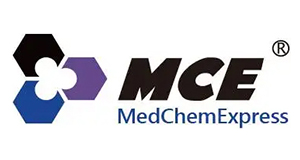Propranolol-d7 (ring-d7), CAS 344298-99-3
Propranolol-d7 (ring-d7), CAS 344298-99-3
SKU
MEXHY-B0573S1-10
Packaging Unit
10 mg
Manufacturer
MedChemExpress
Availability:
loading...
Price is loading...
Product Description: Propranolol-d7 (ring-d7) is the deuterium labeled Propranolol hydrochloride. Propranolol hydrochloride is a nonselective β-adrenergic receptor (βAR) antagonist, has high affinity for the β1AR and β2AR with Ki values of 1.8 nM and 0.8 nM, respectively[1]. Propranolol hydrochloride inhibits [3H]-DHA binding to rat brain membrane preparation with an IC50 of 12 nM[2]. Propranolol hydrochloride is used for study of hypertension, pheochromocytoma, myocardial infarction, cardiac arrhythmias, angina pectoris, and hypertrophic cardiomyopathy[3].
Formula: C16H14D7NO2
References: [1]Russak EM, et al. Impact of Deuterium Substitution on the Pharmacokinetics of Pharmaceuticals. Ann Pharmacother. 2019;53(2):211-216. /[2]Galandrin S, et al. Distinct signaling profiles of beta1 and beta2 adrenergic receptor ligands toward adenylyl cyclase and mitogen-activated protein kinase reveals the pluridimensionality of efficacy. Mol Pharmacol. 2006 Nov;70(5):1575-84. Epub 2006 Aug 1/[3]Briley M, et al. Evidence against beta-adrenoceptor blocking activity of diltiazem, a drug with calcium antagonist properties. Br J Pharmacol. 1980 Aug;69(4):669-73./[4]Al-Majed AA, et al. Propranolol. Profiles Drug Subst Excip Relat Methodol. 2017;42:287-338./[5]Munabi NC, et al. Propranolol Targets Hemangioma Stem Cells via cAMP and Mitogen-Activated Protein Kinase Regulation. Stem Cells Transl Med. 2016 Jan;5(1):45-55.
CAS Number: 344298-99-3
Molecular Weight: 266.39
Compound Purity: 99.38
Research Area: Neurological Disease; Endocrinology
Solubility: DMF : ≥ 50mg/mL/DMSO : ≥ 30mg/mL/Ethanol : ≥ 30mg/mL
Target: Adrenergic Receptor
Formula: C16H14D7NO2
References: [1]Russak EM, et al. Impact of Deuterium Substitution on the Pharmacokinetics of Pharmaceuticals. Ann Pharmacother. 2019;53(2):211-216. /[2]Galandrin S, et al. Distinct signaling profiles of beta1 and beta2 adrenergic receptor ligands toward adenylyl cyclase and mitogen-activated protein kinase reveals the pluridimensionality of efficacy. Mol Pharmacol. 2006 Nov;70(5):1575-84. Epub 2006 Aug 1/[3]Briley M, et al. Evidence against beta-adrenoceptor blocking activity of diltiazem, a drug with calcium antagonist properties. Br J Pharmacol. 1980 Aug;69(4):669-73./[4]Al-Majed AA, et al. Propranolol. Profiles Drug Subst Excip Relat Methodol. 2017;42:287-338./[5]Munabi NC, et al. Propranolol Targets Hemangioma Stem Cells via cAMP and Mitogen-Activated Protein Kinase Regulation. Stem Cells Transl Med. 2016 Jan;5(1):45-55.
CAS Number: 344298-99-3
Molecular Weight: 266.39
Compound Purity: 99.38
Research Area: Neurological Disease; Endocrinology
Solubility: DMF : ≥ 50mg/mL/DMSO : ≥ 30mg/mL/Ethanol : ≥ 30mg/mL
Target: Adrenergic Receptor
| SKU | MEXHY-B0573S1-10 |
|---|---|
| Manufacturer | MedChemExpress |
| Manufacturer SKU | HY-B0573S1-10 |
| Package Unit | 10 mg |
| Quantity Unit | STK |
| Product information (PDF) |
|
| MSDS (PDF) |
|

 Deutsch
Deutsch







